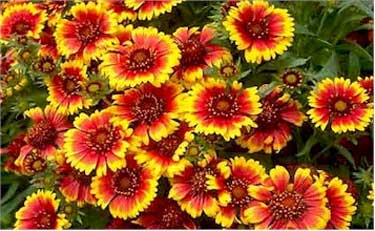
Fire is a Fact of Life in the Sierra Nevada Foothills
California is home to some of the most scenic vistas in the world. The natural beauty and mild, Mediterranean climate [Sunset Magazine Zone 7, USDA Zone 8] have attracted millions to settle in the foothills. Living in Nevada County means learning to live with fire. That’s because our scenic vistas are fire-dependent. Fire cracks seed casings, allowing our native plants to thrive. And it clears out dead brush that can choke living plants and cut off food for wildlife.
Work with nature and choose plants that are climate and soil adapted. Incorporating fire safe concepts into the residential landscape is one of the most important ways you can help your home survive a wildfire. Creating an area of defensible space does not mean you need a ring of bare dirt around your home. Through proper planning, you can have both a beautiful landscape and a fire safe home.
Vegetation Arrangement
The general concept is that trees should be kept furthest from your home, shrubs and trees may be closer and bedding plants and lawns may be nearest to the structure. From a wildfire fuel perspective, vegetation is often described in terms of its vertical and horizontal arrangement. The vertical fuel continuity is also referred to as “ladder fuels.” Laddering arrangements of fuels enables fire to climb neighboring vegetation like a ladder. Reduce the chance of fire climbing into trees by removing the lower tree limbs from 6-10 feet from the ground (or the lower third of branches on smaller trees.)
Fire spreads on the ground from plant to plant and then onto your home. To reduce the chance of fire spreading horizontally, space or group plants in clumps for visual screening while providing enough space between plants to reduce the fire spreading. Individual spacing needs depends on the height and width of the plant, but generally a three times height for vertical separation is a good rule of thumb.
Vegetation Zones
The home defense zone is within 30 feet of the house. The reduced fuel zone lies beyond the home defense zone and extends out to 100 feet from the house or the property boundary. Greater defense zone widths are necessary when your home is sited on a steep slope or in a windswept exposure. The most intensive vegetation management lies within the home defense zone. Objectives for the home defense zone include:
- Remove any combustible materials (such as needles, leaves, dead twigs, firewood, dry grasses, recycling, and building materials) from within 30 feet of the home, garage, outbuildings, and propane tanks.
- Reduce the ladder effect between plants.
- Replace any flammable plant species (such as juniper, cypress, or broom varieties) with fire wise plant selections.
- Maintain high moisture content in the vegetation
Where to Plant
Avoid putting plants in the following locations to minimize the movement of fire from the vegetation to the home: immediately adjacent to the siding; underneath vents or eaves; tree limbs over the roof; and underneath or near the deck.
Mulching
Mulch conserves moisture, but also burns. Carefully choose the location of plants or garden beds that will need mulch. Mulches greater than 2 inches deep tend to smolder and are difficult to extinguish. Do not use wood or bark mulches within 3-5 feet of the house. Instead consider colored rock, pea gravel or other less flammable materials. Having a “hardscape” immediately adjacent to your home will help harden the structure from flying ember intrusion.
Maintenance
Maintenance is critical to fire safety. Over time, plants grow both vertically and horizontally, mulches dry out, leaves and needles accumulate within and around landscape vegetation. All of these fuels may help feed a fire. Remember to conduct annual cleanup of your established vegetation to ensure a fire safe condition during wildfire season.
Remember that no plant is completely resistant to fire. Plants with low fuel content can be the difference between safety and destruction. You will find that a fire safe landscape can increase your property value, provide wildlife habitat and conserve water while beautifying your home.
Download your Copy of the Firewise Plants for Western Nevada County Plant Guide complied by: Lynn Lorenson, Landscape Consultant & Master Gardner; Karen Callahan, CA Native Plant Society; and the Fire Safe Council of Nevada County.
Visit the Fire Safe Council of Nevada County’s Firewise Landscaping webpage for additional information.
Related articles
- Mulching Tips for Your Garden (proflowers.com)
- Make the Most of Mulch (mgnv.org)
- How To Use Newspapers To Kill Garden Weeds (edshort.wordpress.com)
- Consider Wildlife When Creating A Firewise Landscape (nevadacounty.com)
- Volunteer To Remove Scotch Broom In March 2012 (nevadacounty.com)
- 2012 Firewise Living Award Winners (yubanet.com)
For all your real estate needs:
Call or email today
John J. O’Dell Realtor® GRI
Real Estate Broker
Civil Engineer
General Contractor
(530) 263-1091
Email jodell@nevadacounty.com
DRE #00669941
